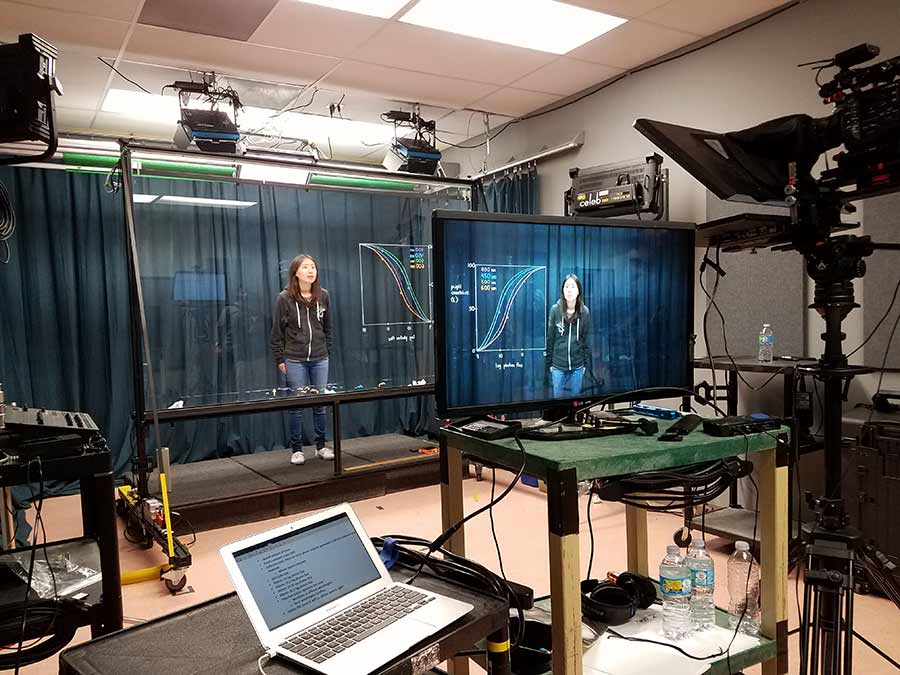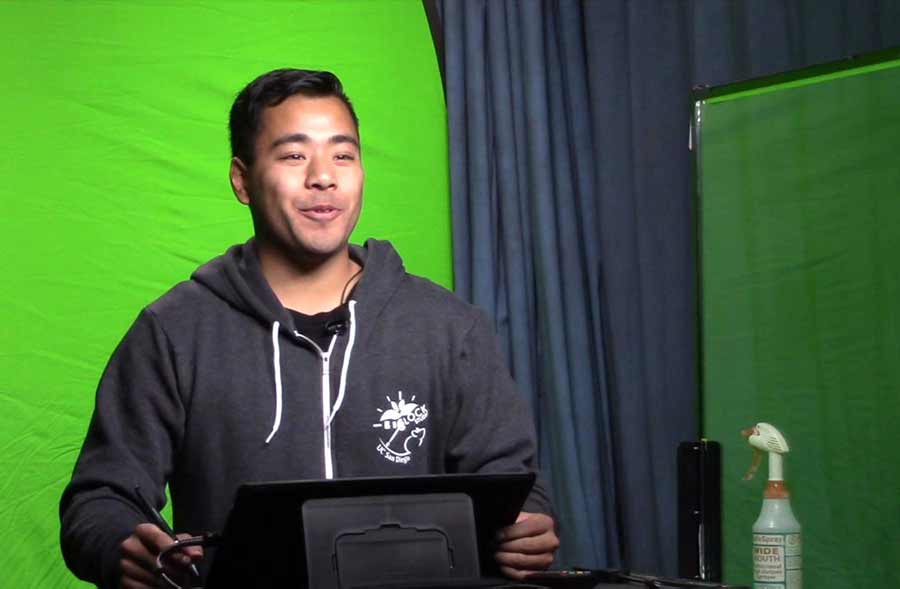
By:
- Danica M. Sirmans
Published Date
By:
- Danica M. Sirmans
Share This:
An Innovative Way to Educate Students About Circadian Biology
Circadian biology had long been overshadowed by other sub-disciplines in the biological sciences. But when Susan Golden was named a Howard Hughes Medical Institute (HHMI) professor in 2014, she launched the UC San Diego BioClock Studio to promote and educate students about circadian biology.
Golden, a Chancellor’s Associates Chair of molecular biology and director of UC San Diego’s Center for Circadian Biology, was awarded a five-year, $1 million grant to start the BioClock Studio through an HHMI program that funds activities that integrate “research with student learning in ways that enhance undergraduate students’ understanding of science.”
Three years later, the BioClock Studio has developed into an innovative program composed of undergraduate students across diverse disciplines and backgrounds who work collaboratively with UC San Diego’s Center for Circadian Biology research faculty and staff. Their mission is to enhance scientific understanding among students, the general public, clinicians and researchers outside of circadian biology.
“We have the unique opportunity to make course material for academia and for the general public that were not readily available in the circadian biology field before,” said Golden. “Our BioClock undergraduate students work closely with faculty, postdoctoral and graduate mentors to create innovative learning material across different mediums, which we share with subject-matter experts across the globe for feedback.”

BioClock Studio’s Waverly Tseng uses Learning Glass technology at EdTech to draw a chart as supplemental material for UC San Diego’s circadian rhythm undergraduate course. Photo Courtesy BioClock Studio.
The course material created from the BioClock Studio each winter quarter is integrated into the syllabus for a specialized circadian rhythms undergraduate course offered exclusively in the fall quarter. More than 250 students enroll in the clocks course each year.
Paul Llanura is a graphic design student and one of the undergraduate students in the 2017 BioClock Studio cohort.
“I think that creating educational materials is a good opportunity to learn about applying the arts to scientific research, and I hope to create something that has a beneficial impact to students,” he said.
Outside of traditional text and slide deck presentations, the BioClock Studio creates multimedia pieces, interactive videos and creative graphics to aid in learning about aspects of circadian biology in academia and for the general public.
Besides its relatively specialized nature, the Center for Circadian Biology stands apart from centers at other universities because of the sheer breadth of research that is represented here in the general area of circadian biology. Circadian research covers everything from human sleep disorders and metabolic problems caused by shift work and jet lag, to understanding the way microorganisms such as bacteria regulate their internal biological clocks.
Golden’s research in cyanobacteria focuses on how cells synchronize their clocks with the environmental cycle and how they are impacted for better or worse when conditions are optimal or otherwise.
Beyond the campus walls, BioClock faculty and students’ coursework are building a massive open online course on circadian rhythms that provides additional opportunities for students and others to learn more about the impact that changes in biological clocks can have on our health and biological processes.

BioClock Studio’s Jared Kim presents during a video shoot to create supporting materials for a circadian rhythm undergraduate course. Photo Courtesy BioClock Studio.
With the recent announcement of the 2017 Nobel Prize in Physiology or Medicine awarded to circadian biologists Jeffrey C. Hall, Michael Rosbash and Michael W. Young, the discipline is being thrust into the spotlight and inspiring interest at all levels of education.
Victoriah Nudell, a master’s student completing her research thesis in circadian biology, said she was pleased to hear the news.
“I remember watching Dr. Rosbash's lecture series for the undergraduate circadian rhythms class when I first learned about the molecular mechanism of the mammalian clock,” she said. “Hopefully this Nobel Prize will continue to bring attention to the ever-growing field of circadian rhythms. From basic science research, translational health initiatives lead to discoveries like those of Hall, Rosbash and Young. I hope to see circadian biology realized to its full potential so its discoveries can continue to improve lives.”
The five-year HHMI grant, which supported the formation of the BioClock Studio and is educating the public about circadian biology on a larger scale, however, ends in two years and Golden is hoping the publicity surrounding this year’s Nobel Prize will generate interest in continuing its activities.
“So many people benefit from this program,” said Golden. “The students who take the circadian biology class in the fall benefit because they have an opportunity to learn using creative ways to make this information accessible. The students in the studio benefit because they get one-on-one time with research mentors. Because of the grant from HHMI, we can ensure that this program can provide these benefits in a truly professional way.”
“We hope that with this Nobel Prize, circadian biology won’t be regarded as a field off by itself,” she added. “All areas of biomedical, agricultural and engineering research that relate to how people function have a circadian component. UC San Diego can help in a big way because we have so many people working in circadian biology and collaboration with our specialists and with our programming can help to bring circadian biology to other areas of research and biological science.”
Share This:
You May Also Like
Stay in the Know
Keep up with all the latest from UC San Diego. Subscribe to the newsletter today.


